What is bossam?
How to enjoy bossam
The cut of pork
Pork belly (samgyupsal, 삼겹살) and Boston butt (moksal, 목살) are the most commonly used cuts for this dish. Picnic shoulder (apdarisal, 앞다리살) is another option. You can also use a combination of these. If you’re using a big roast size, cut it into smaller pieces.
How to boil the pork
Korean cooks add a variety of ingredients to the boiling liquid to eliminate the unique smell of pork and to flavor the meat. The addition of doenjang (fermented soybean paste) is not surprising because pork and doenjang go very well together in dishes like doenjang jjigae.
Coffee is also very common. You can use instant coffee or brewed coffee (about a cup). Lately, I’ve been adding a small bottle (or can) of beer instead of coffee. If using brewed coffee or beer, reduce the amount of water by the equal amount.
You will hardly taste doenjang, coffee or beer from the boiled meat. They simply enhance the natural flavor of the pork. The result is rich, but subtly flavored, deliciously moist meat!
These are only a guide. You can add different ingredients or use less ingredients to make it more simply.
To cook the meat, add all the aromatics to the pot with water and bring it to a boil before adding the pork. Bring it to a boil again, cover, and boil for about 45 minutes over medium heat, depending on the thickness of your meat.
Tips for boiled pork
- Let the meat cool in the cooking liquid before slicing. This will keep the meat moist.
- If you are short of time, cool the boiled meat under the cold running water before slicing.
- Slice the meat right before serving so it doesn’t dry out.
For more Korean cooking inspirations, follow along on YouTube, Pinterest, Twitter, Facebook, and Instagram.
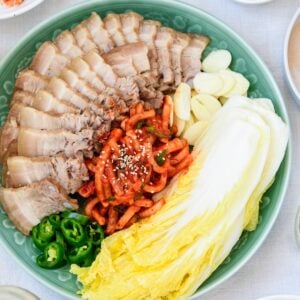
Ingredients
For the wraps
- tender inner parts of 1 napa cabbage, salted or red or green leaf lettuce
- (Dissolve 1/2 cup coarse salt in 4 cups of water, and soak the cabbage leaves until softened, 2 to 4 hours. Rinse and drain well.)
- Radish salad, musaengchae - See recipe.
- saewujeot (salted shrimp) use it as is or mix with a little bit of gochugaru, sesame oil and seeds, and chopped scallion
For the meat
- 2 whole fresh pork belly about 3-inch wide cut about 2.5 pounds
- 1/2 medium onion
- 2 - 3 white parts of large scallions
- 7 - 8 plump garlic cloves
- 1 inch ginger (thumb size), sliced
- 1 teaspoon whole black peppers
- 1.5 tablespoons doenjang, fermented soybean paste
- 1 teaspoon instant coffee, or a cup of brewed coffee or a small bottle (or can) of beer - 12 ounces
- 1 teaspoon salt
- 2 bay leaves
- 7 to 8 cups water (see note) if using brewed coffee or beer, reduce the amount of water by the equal amount
Instructions
- In a pot, bring water and all the brine ingredients to a boil over medium high heat, and continue to boil for 5 minutes.
- Add the pork belly, bring it to a boil. and boil for about 5 minutes, uncovered. Reduce the heat to medium, and cook, covered, until the meat is very tender, 45 to 50 minutes. Cut a small slice and try if tender at 40 minute point before cooking longer. Turn the heat off, and cool the meat in the cooking liquid. This will keep the meat moist.
- Thinly slice the meat and serve with the salted cabbage (or lettuce), saewujeot, and musaengchae.
Notes
- The amount of liquid you'll need depends on the size of your pot. Do not use a large pot because you'll need more water to cover the meat.
- Keep any leftover meat in the cooking liquid. Boil the meat in the liquid to reheat. This prevents the meat from drying out.


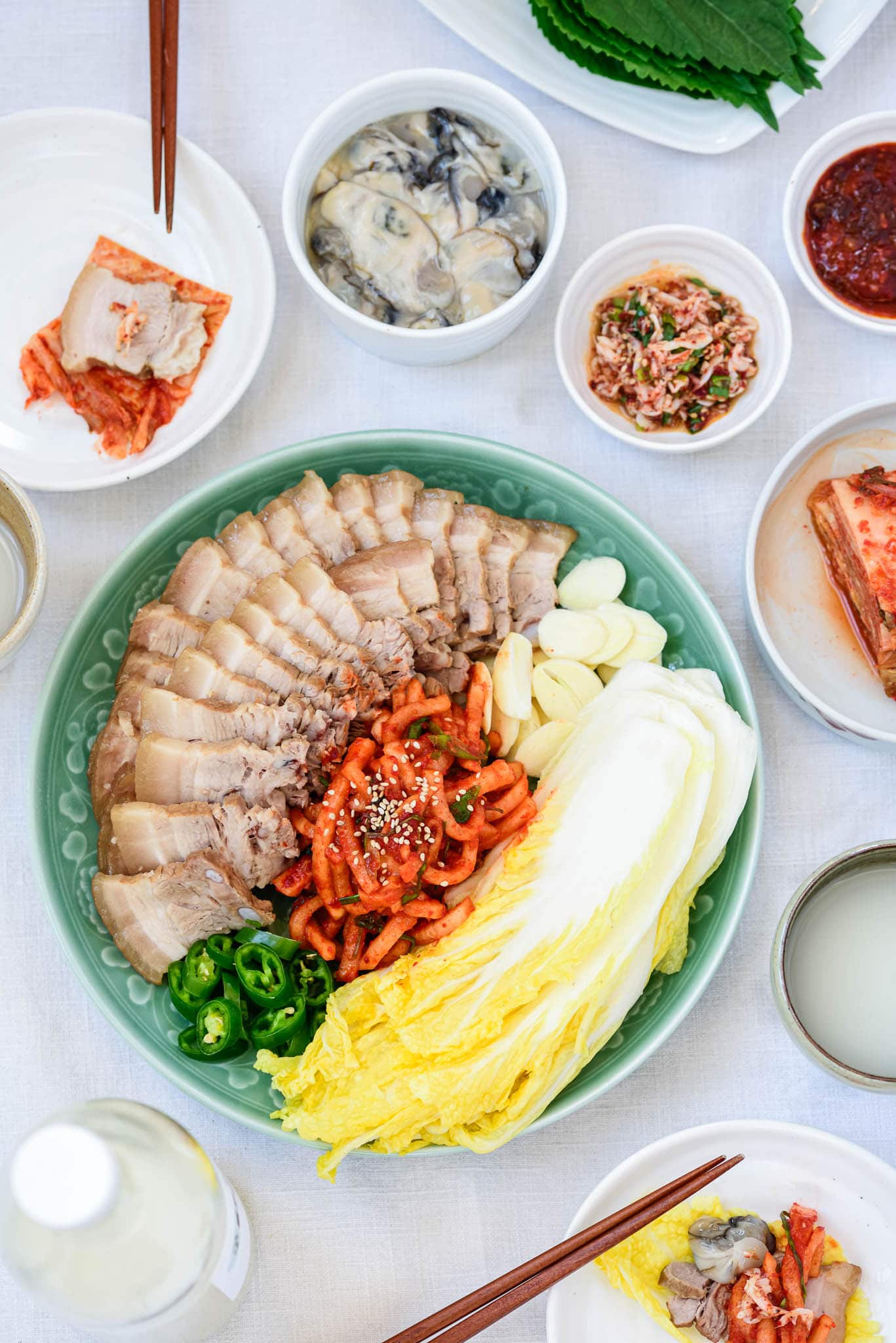
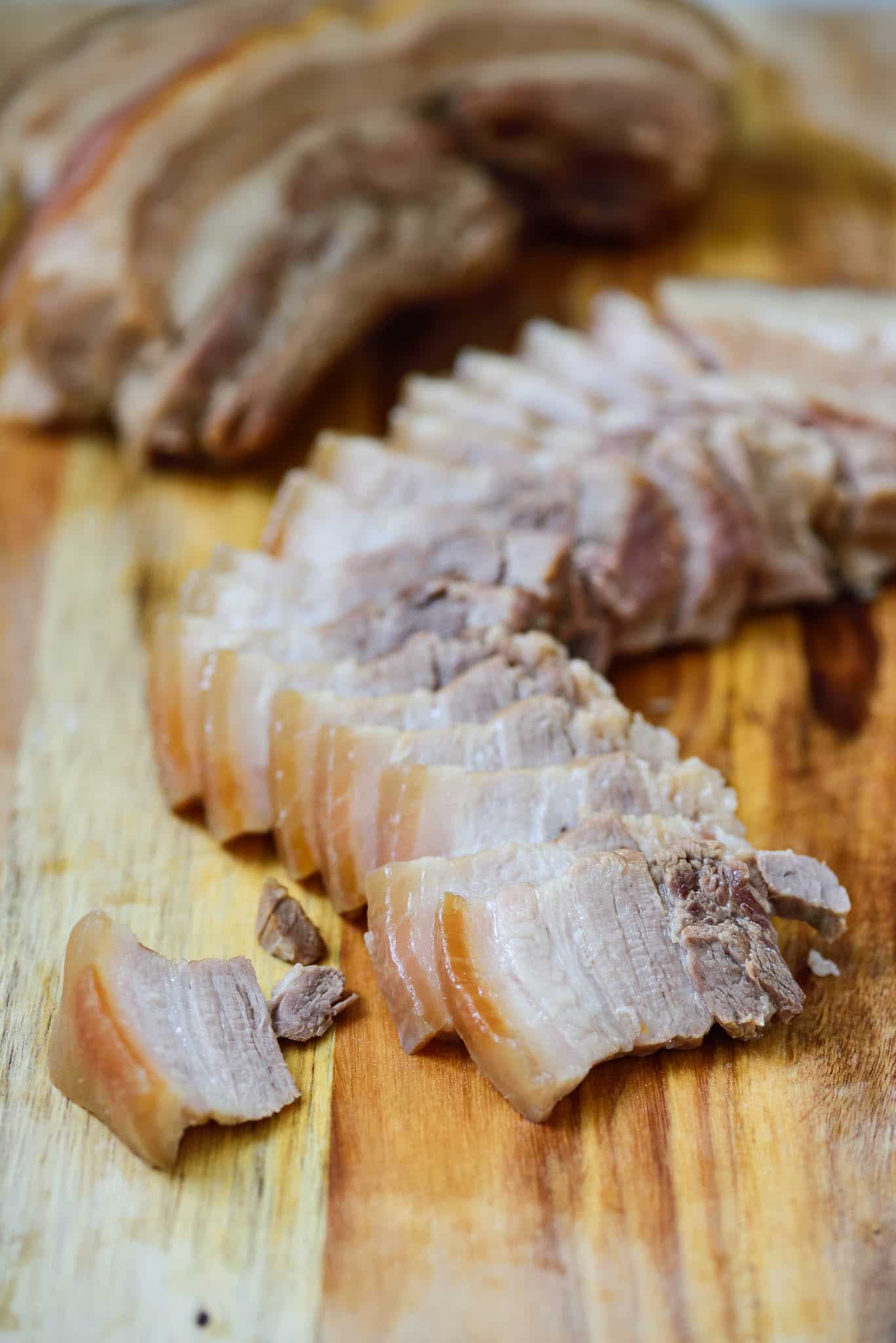
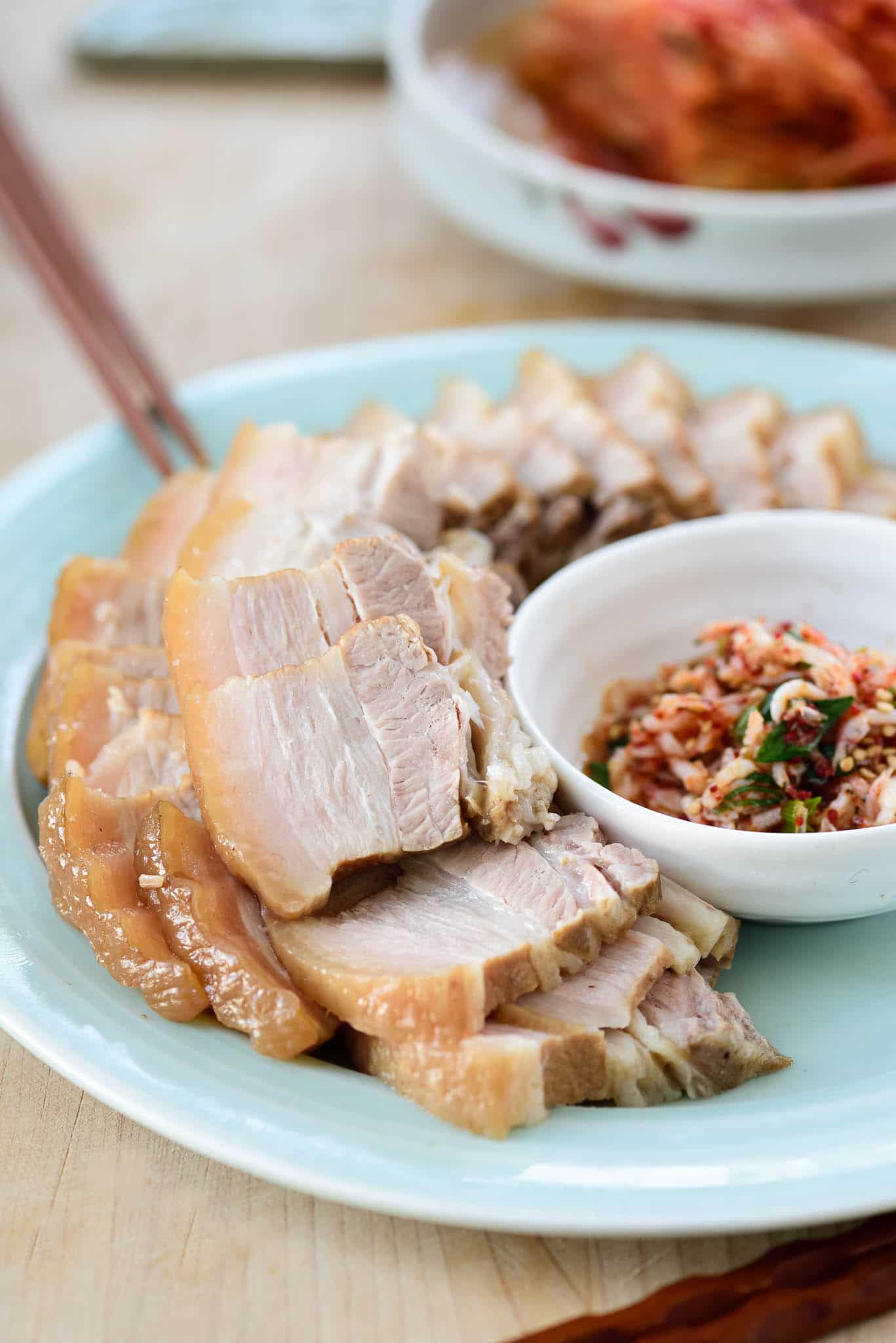
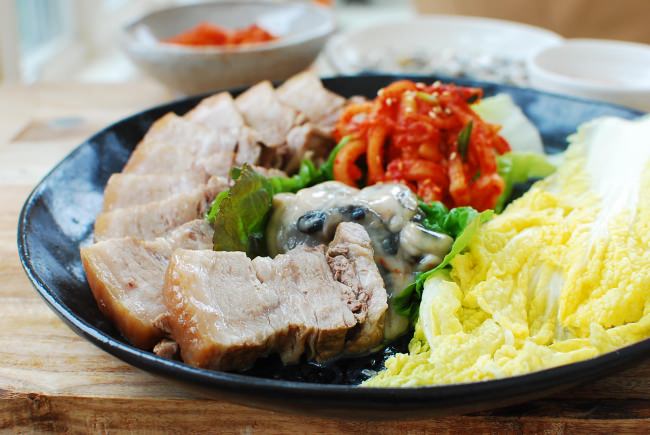
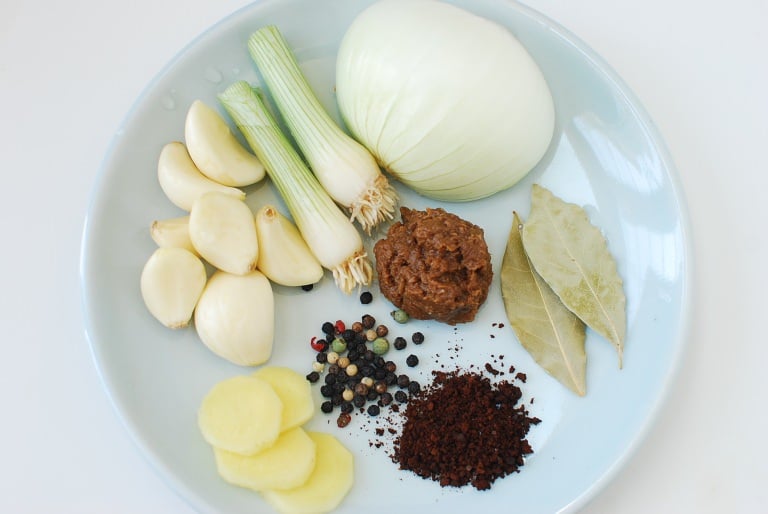
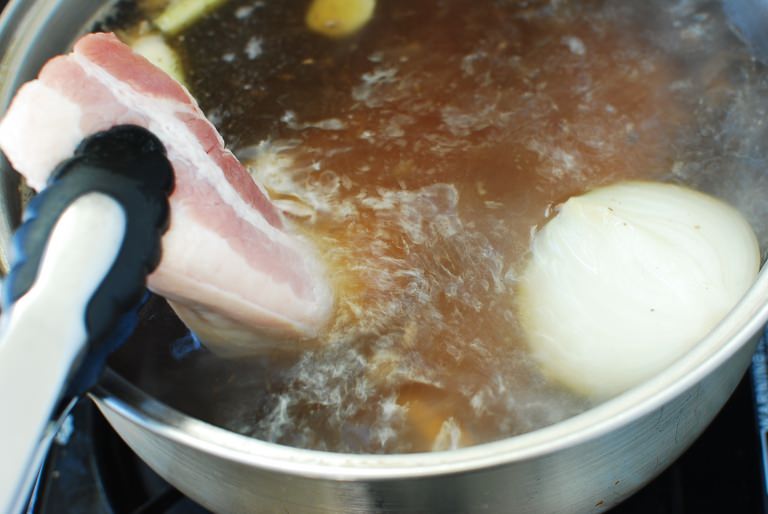
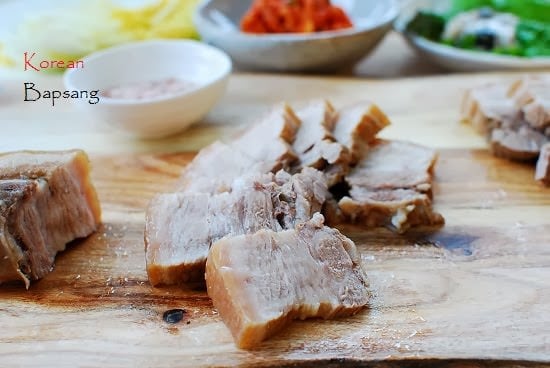
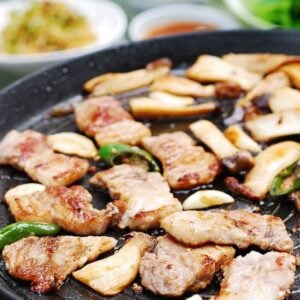
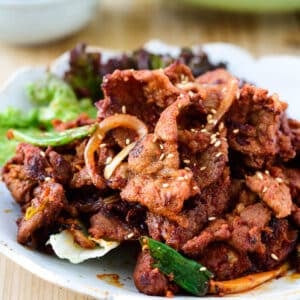
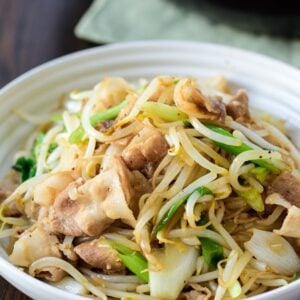
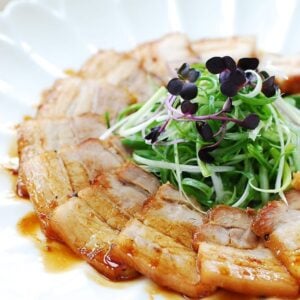













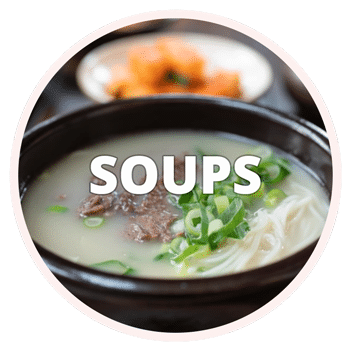



Mango says
I love this recipe! I’ve made it several times and it’s always delicious. I’m currently unable to have soy due to breastfeeding my baby with soy allergy. Is there a substitute I could use for the doenjang?
Linda says
At most Korean restaurants I’ve been to, they have two dipping sauces, one is the salted shrimp, do you know what the other paste is? it has a taste very similar to Chinese fermented bean curd. I really like that dipping. By the way, I tried your recipe and it was delicious! The family enjoyed it! This is a dish we usually order when we eat out.
Ben Lee says
Ssamjang; it can be purchased commercially or it can be made with a combo of doenjang and gochujang cooked with aromatics.
W says
Tried and true recipe and a hit with the family multiple times. Done in an instant pot too!
Thank you!
Nadine says
Hello! Do you mind giving me the cooking time and instructions for boiling the meat in the insta pot? Thanks
Hannah says
What do you do with the vegetables used in the soup? Is it thrown out or could it be reused?
Hyosun says
They did their job to flavor the meat. I throw them out.
Alex says
“2 whole fresh pork belly” those are rookie number, you gotta bump those numbers up 😅
Hyosun says
haha yes!
Anish ( Korean name : Baek In Su ) says
Hi ! I’m not a chef or not someone who cooks often ( I will start cooking soon I’m 18 now ) , but this is the third time I’m reading one of your blogs and wow ! I am amazed , flabbergasted and don’t know what else . I fell in love with Korean food because of Sir Baek Jong Won . That is the reason i like studying about authentic Korean recipes . This blog , made me feel like i was getting instructions from Sir Baek Jong Won himself , I absolutely loved this blog , looking forward to cook it soon .
Thank you !
Hyosun says
I’m very happy to hear about your interest in learning Korean food! Thanks for the love for my blog! Glad it’s helpful.
Cece says
I don’t like ginger can I omit it? I also don’t have salted shrimp is there a dip I can substitute it for? Looks delicious I’ve been craving this so bad!
Hyosun says
It’ll still be delicious without ginger and saeujeot (salted shrimp). You can try a salt and pepper dip, with a drizzle of sesame oil.
Grace says
Is there anything I can substitute with for the coffee grounds?
Hyosun says
You can omit it or brewed coffee if available. Beer is great too.
Emily says
Hyosun, your recipes are awesome! I have the Korean Maxim’s instant coffee that contains cream & sugar. Can I use that in the bossam recipe or it must be plain coffee? Thank you for sharing the recipes!
Hyosun says
Thank you, Emily! I personally wouldn’t use coffee mix with cream & sugar. You can skip coffee or just use drip coffee if you have.
Rebekah K Shin says
Hello. I so love this dish. Do you know that hanja for the word 보? My husband is Korean and he was unsure what it means, since the he needs to know the hanja. Thanks so much.
Hyosun says
It has a meaning of wrap. So, in Korean, siktakbo means a table cover, bojagi means a piece of fabric used to wrap something, etc.
Tiffanie says
So good, made this for my boyfriend and I and it was juicy, flavorful, and so fragrant! We even drank the meat soup, at that point it was similar to consumme haha.
Just one thing – On the meat instructions, it says to add all the brine ingredients together, not sure if I was just overthinking it but for a while there I stood, wondering if I should add the brined lettuce into the meat stock.
Thanks for the recipe!
Emily Kil says
i tried cooking this in the pressure cooker for 20 minutes instead of boiling on the stove. it tastes delicious but i think cooking it in the pressure cooker resulted in meat that was fall-apart tender. i wasn’t able to slice it neatly.
Hyosun says
You’ll need to further reduce the time. I haven’t tried it in the pressure cooker so not sure exactly by how much, but will update when I try.
Jessica says
Hi! I need your help!
I love bossam so much, but this is the first time im making it at home.
My meat is already cut into 1,5 cm x 15 cm chuncks, so how do I adjust the cooking time?? 🙂
Thank you so much for the help!
Joel Champion says
My Korean friend taught me her grandmothers recipe for bossam but she didn’t tell me about the radish salad and other things, this technique and side dishes was absolutely spot on! My pork belly was incredible, skin on at her advice. Yum yum yum. Korean food is incredible.
Vinn says
Thank you for sharing this recipe Hyosun-ssi..
I am an international student in China, and once my neighbor is a Korean family.
They’re sometimes cooked Korean food and let us eat together with them..
And there’s one time when they cooked Bossam and i was in love with that food !
but, they’re moving back to Korea last year so i forgot to ask her how to make it, and i was so happy when i see your recipe , its easy to understand^^
I tried this recipe yesterday for potluck, and all my friends love it as well..
i’m so thankful ^^
Hyosun says
Hi Vinn – I’m very happy to hear you made bossam for your friends and they loved it. Thanks for leaving me the comments!
Felicity says
Hi! I just wanted to leave a message and say how amazing this recipe is. I tried it out tonight and it was unbelievable! The coffee really does the trick (although you can’t taste it in the meat!). I was so surprised by how tender the meat became. This has definitely become one of my favourite recipes. Thank you for sharing it!
From your new fan in Australia!
Ellie says
Hi! I just recently discovered your website and I LOVE your recipes. I want to try this recipe next. Can I make it in a slow cooker? If so how long do I need to cook it for? Thanks!
Hyosun says
Hi Ellie – Yes you can. You will not need any water, and it will probably take 4 to 5 hours on high (6 to 8 hours on low), depending on the thickness of the meat and your slow cooker. You will need to watch the time toward the end if you want the meat to be sliceable. Hope this helps.
Karen says
Great family story. I love this dish! A Korean friend of mine makes it after we make the yearly batch of kimchi. She uses all the same ingredients and adds miso to it as well. Smells great when the pork is simmering.
Jessica says
Question- what is the function of adding bay leaves to the pork belly? I’m thinking that the eucalyptus/menthol flavors that bay leaves have isn’t inherent or natural to traditional Korean food (I’m also thinking of my mom’s Korean palate), so I’m a little confused.
Hyosun says
You can omit it if you want. Bay leaves and/or seveal other herbs are such as star anise are not uncommon in modern Korean cooking in dishes like this to create a complex flavor. Used in moderation, they enhance Korean flavors.
Robin Pigott says
I would give ALL 5 stars for this recipe! I am a Korean and this dish was my father’s favorite and one of mine. He was originally from the north of Korea, Shinuijoo to be exact. He wouldn’t use the spicy turnip salad for the wrap (Koreans from the north usually don’t eat very spicy foods). Instead, he just used the saewoojot sauce. When I was little, I remember he often requested my mother to make this dish whenever he wasn’t feeling well. There is a Korean restaurant in LA, specializing this dish where I always go whenever I visit my mother who now resides in LA and your recipe is very comparable if not better. I live in Portland/Vancouver area in the Pacific Northwest. After being disappointed many times, trying this dish in various Korean restaurants, I decided to give your recipe a try. The result was fabulously flavorful and very tender pork! Even my very health conscious American husband couldn’t stop eating it 🙂 Thank you!
Hyosun says
Thank you, Robin! Your father certainly knew the best. The pork belly is great simply with saewoojeot. I’m thrilled to hear my recipe turned out well for you and your husband. Thank you so much for such a fabulous review of the recipe! I really appreciate it.
Corey Lynch says
I am moving home with my wife and baby to Canada and am glad to have found this recipe to keep us all happy. I have been so worried about my wife missing Korean food!
Hyosun says
Hope you and your family continue enjoying Korean food in Canada. Thanks for coming by!
Julia says
Thanks so much for this recipe! I’m making it right now… I’m wondering if there’s anything else you can use the cooking liquid for after you’re done with the pork. Meaning, could it be used as a stock the way you would reuse chicken stock?
Thank you!
Hyosun says
Sure, you can use it as a stock. Try it in doenjang jjigae, or anything you will use pork as a soup/stew base. Thanks!
Mheamark Umbod says
I love cook korean food…all recipes
Fern @ to food witH love says
Hi Hyosun,
I made this for dinner tonight and ate it with ssamjang, kimchee and lettuce. It was delicious! Thanks for sharing. I forgot that I had to keep leftover meat in the stock, and threw it out before I realised it! ;p
Hyosun says
Hi Fern – Thanks for trying the recipe! I’m delighted to hear it was delicious! I’m sure your leftover was still good without being in the stock.
Hyunjin says
My previous partner used to put soju in it to get rid of the 비린내, I’m thinking about making this for tomorrow night but I was just wondering if it’s necessary to do so. Thank you for your blog! I’d rather read your recipes than comb through naver!
Hyosun says
Hi Hyunjin – There are enough ingredients in this recipe, such as doenjang, onion, and coffee, that help remove the pork order, so you don’t really need soju or any other alcohol. Enjoy! And thank you!
ros says
I ate this yesterday for the first time after a hike up mount Inwangsan in Seoul. What a delicious dish!
Hyosun says
It is. My family loves it! I’m sure it was even better after the hike up the mountain. Oh I miss Korea…
Mike Rhodes says
I have been living in Korea for the last two years and this is by far one of my favorites and was the first meal that my fiance cooked for me.
Me says
I read that you can use green tea also if you don’t want the caffeine from the coffee. I’ve had bossam at a restaurant, but I’ve never cooked it myself. I’ll have to give it a try.
Hyosun Ro says
Hi Me – Tea leaves are also used. I have a small jar of decaffeinated coffee that I use for cooking and making ice cream, etc. Please try it and let me know how it turns out. Thanks for visiting!
Vincci says
What a lovely story about your father and bo ssam! Here in North America it has definitely evolved to slow roasted pork with lettuce wraps, so it was very interesting to read your story about the authentic version. I can’t wait to try this!
Hyosun Ro says
Thank you, Vincci! I know David Chang’s slow roasted version is hugely popular. I’m sure it’s delicious, but that’s a creative interpretation of the dish by the awesome chef Chang, not the traditional way we Koreans prepare bossam. Thanks for coming by! Cheers!
Clara says
Thank you for this recipe. Its usually my standby emergency meal when I am too lazy to cook anything. All I need to do is make some ssamjang. Get some kkaenip from the garden+ add the vegies and we’re done.
I must have been on a roll as I’ve cooked your miyukguk recipe last week for my son. Plus eating some leftover kimchi jjigae from your recipe. Plus cooked some galbijjim last week along with gamjatang. Plus some banchan.
Thank you for all these recipes. I’ve grown used to your taste and so have my children.